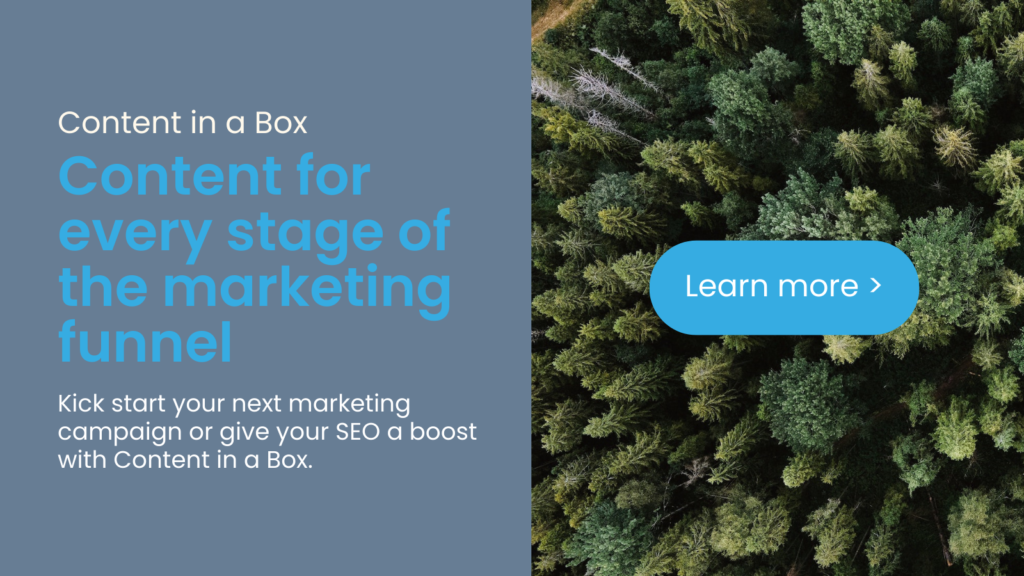If you’re looking to create more content for the bottom of the funnel, have you considered a B2B customer story?
This is distinctly different from a case study although I think some people are using the terms interchangeably. As the name suggests, it uses storytelling to take readers on a journey with you – the story of how a lead became a customer.
This style, compared to case studies and use cases, is highly engaging and personalised. It works really effectively when you’re marketing to a select target audience as it plays on good old fashioned empathy. By that I mean that the target audience recognises themselves in the customer story.
Perhaps the key difference between a B2B customer story and a case study is that in a customer story it’s all about the people – the real life employee who engaged with the real life people in your company. Whereas most case studies focus more on what your business did for another organisation.
Telling a B2B customer story: a beginning, a middle and an end
Here is what a customer story looks like…
The beginning of your customer story
Once upon a time your customer, a real person or team of people, needed a service or product to help them do their job. They spent time trying to identify the solution they needed based on their challenges, objectives and requirements. Along the way they may have been frustrated by other providers not living up to expectations, or they may have tried other solutions that didn’t deliver what they needed.
Somehow they found your company and they liked you (or your colleagues) for specific reasons. They weighed up the pros and cons of working together, they learned more about you and this reassured them and gave them more reasons to do business with you. You provided them with answers to their questions, more information to help them make a decision, and perhaps they also met more of your team or even customers.
The middle
They decided to work with you. Maybe there were a few challenges to overcome. Perhaps your team went above and beyond to resolve these difficulties, or delivered more than promised, faster and more efficiently.
They loved the experience of working with you because… fill in the blanks.
Different members of your team did amazing things. They’re real people and so they’re all part of the story.
Your customer was quite demanding, but that’s OK because you understood why – they’re human – and you always tried to be as flexible and accommodating as possible. This is what you did and do.
Ultimately, you got the job done.
The end
Your customer, the real person, was really happy with the result. It enabled them to achieve specific goals, it delivered the expected ROI and perhaps exceeded it, and has left a lasting positive impression.
They can’t wait to give you a testimonial – insert here!
For the real life employee or team there were clear benefits. Your services or solution makes them look good at their job. It’s given them more time to focus on other things. Your hard work has perhaps freed up budget to spend on other activities, or driven other efficiencies.
For their company your solution has delivered specific things aligned with strategic or tactical objectives.
They’re now thinking about working with you more. Exploring what else you can do for them. They really enjoyed the experience and want you to be a more frequent part of their working life.
If they’re receiving a subscription, retained or managed service, they’re really excited about the relationship and the journey they are now on with you. You’ve both got plans for the future to do things even better.
How to align a customer story with your content marketing strategy
As mentioned earlier, B2B customer stories work really well when you have a clear target audience. So if you want to boost sales of a specific product or service the first step is to nail your buyer persona for that solution and identify a customer that’s a carbon copy for that persona.
Speak to customer-facing colleagues to find the right person. They’ll obviously need to be happy with the work and willing to participate. But it’s also important to identify a customer story that gives you plenty of opportunity to showcase your skills and expertise. The more complex the project, the more interesting the story.
However, if you’re struggling to find a project with complexity, approach a customer that was really hands-on and involved in the project. They should have lots to say about their experience of working with you.
Writing a customer story is a great opportunity to develop a marketing funnel for that target persona. You’ve got a real life person to talk to about their experience: how they found you, what information they wanted from you, what was useful and what other things they would have liked to help them make a buying decision.
Use this interview to explore any gaps in your content further back up the funnel. Find out more about what made your company stand out from competitors, who else was on the shortlist (and what they liked about them) and don’t be afraid to ask questions about what they didn’t like about the buying experience with you.
Happy storytelling!





